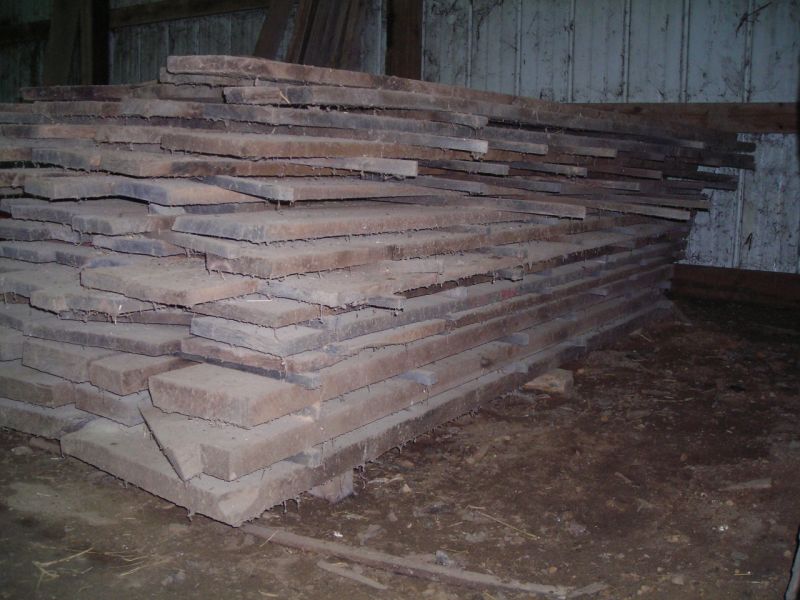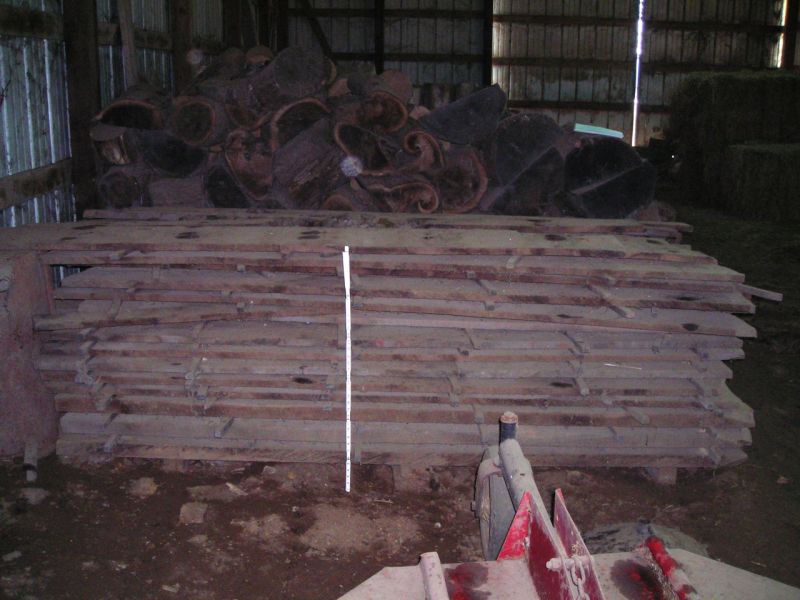Cleaning and Deodorizing Urine-Contaminated Wood
Advice on how to handle old lumber wood salvaged from storage, which appears to have been "soiled" by raccoons. 16, 2014
Question (WOODWEB Member) :
I just came into possession of 20 boards of white oak and walnut that had been milled into 4/4" and 8/4" boards and stored in a barn about 15 years ago. They were stacked and stickered fairly well (I picked up the wood myself) and out of the elements. Well, that is, other than the elements of what appeared to be years of animal poop and urine. It was apart from where the livestock were kept and the guy giving me the wood said it was from a raccoon. I didn't think much of it until I brought it into my shop and noticed the overwhelming stench of it all. It is a clear and extremely pungent animal urine smell.
Has anyone dealt with this before and do you think the smell can be removed either through the milling process or by some sort of treatment? How deep is the smell likely to be into the wood? Assuming I could tolerate actually working with it, should I be concerned about hantavirus and stuff like that? It's a shame because almost all the boards are 10 plus inches wide and two of the 8/4 oak are 22 inches wide. They are flat and straight too. The intent was to use the wood for fine furniture. Anyway, Iím open to thoughts, suggestions or questions.
Forum Responses
(Sawing and Drying Forum)
From contributor Z:
Over 25 years ago I purchased some black walnut that had been kept in a barn and had cow poop all over it, probably pee too. Every time I worked that walnut I could smell cow but the finished products looked and smelled fine. Your millage may vary.
From Contributor U:
You can always use some white vinegar mixed with water. This will help remove the smell and not stain the wood. Vinegar is used also to remove mineral deposits in red oak. Just mix it in a 50/50 spray bottle and then spray the wood when you smell it as you cut. You don't want to soak the wood, just spray the surface.
From contributor Y:
There is a product called "Odoban" that is an enzyme that breaks down urine and feces. There is a bottle of it or a similar product in about every janitor's closet in every school. After having housebroken a number of puppies, I can vouch for it.
From the original questioner:
Also, I didn't mention this, but the wood was provided to me by an upcoming client who was hoping for sentimental reasons to have the wood turned into furniture if possible (the trees were from his childhood farm and the wood was milled and stored by his father). The project was not contingent on being able to use the wood, however. Neither he nor I were primarily motivated to save a buck on lumber, or in his case the cost of furniture. I have had several inquiries over the years from prospective customers looking to get a deal by providing their own wood.
At any rate, I'm just trying to gather info before proceeding. I have no experience using wood from unconventional sources (for me, that means wood that I haven't picked up from a hardwood supplier or lumberyard) and it occurred to me that this might be a fairly common situation that people have dealt with before. Other than the smell and the stains, the boards honestly don't appear much different than older boards that you might find at a typical hardwood supplier.
From the original questioner:
For what it's worth, here are a couple photos of the wood stack before I picked up the wood.

Click here for higher quality, full size image

Click here for higher quality, full size image
From contributor W:
Do check for powder post holes, though. There are several products out there. Look for enzyme action - simple acids or bases won't work. The chemistry behind the odor is more complex than that.
From contributor J:
I tried all of the above, including bleach on a drawer from my father's roll top desk that the cats sprayed on. The thing that worked was baking soda. Make a paste with water rub on, let soak in. Let it dry, then brush or vacuum it off. This is not expensive and won't hurt the wood. Try it first.
From Contributor B:
There is nothing wrong with the wood. Before milling I would give it a good blast with compressed air (outside) and inspect each board for dirt, grit, etc. before milling to save your cutter heads. With a good dust collection system I don't think there is any terminal exposure to toxicity however, a dust mask might be a good idea at least for the first milling processes. I have seen some beautiful furniture and built-ins constructed out of re-claimed lumber with feces. By the time it's stained, sealed and finished any little gremlins remaining will have a tough time hanging on. I'd pay attention to the moisture content. Just because the material is however many years old doesn't guarantee moisture content low enough for interior use.

